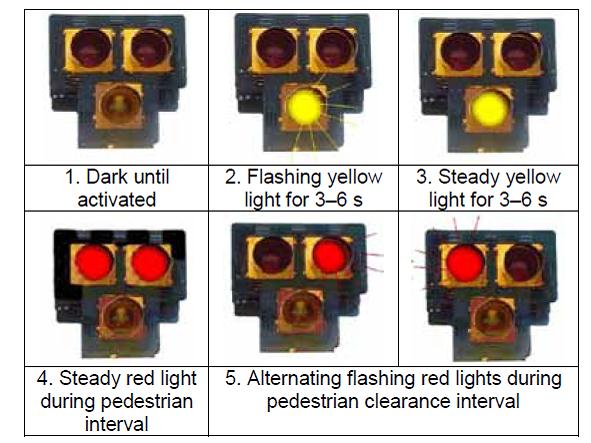
In an effort to reduce crashes involving pedestrians, several major U.S. cities have begun testing a new traffic light system. The only problem is that they’re so different from what we’re all used to, that some drivers don’t know what to do when they see one.
The new lights are called “High-Intensity Activated crossWalKs” (HAWKs), and have so far been installed in cities in Massachusetts, Kansas, Idaho, Texas, and Oklahoma.
The Boston Globe did a good job of explaining how the new lights work.
“A driver will see three clusters of three lights as they approach… At first, they will be all black. At that point, it’s safe for drivers to proceed.
When a pedestrian activates the system, a single light will blink yellow on all three clusters before turning solid yellow, signaling drivers to prepare to stop.
Quickly, the two solid yellow lights will turn into two solid red lights displayed in each cluster. Drivers must stop.
Then those lights are replaced by two alternating flashing red lights in each of the clusters. This means it’s safe to drive again, as long as there are no pedestrians in sight.”
Some pedestrians and drivers are so confused by the traffic lights, that states have begun handing out instructions on how they work.
These instructions were posted by the Idaho Department of Transportation.
Police say they’ll give drivers a grace period in order to get used to the new lights, but will eventually begin enforcing the traffic lights like any other intersection.
For now, citations will only be given out on a case-by-case basis.


